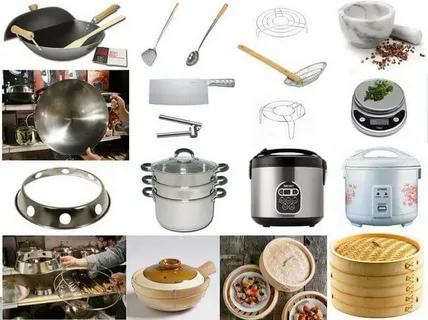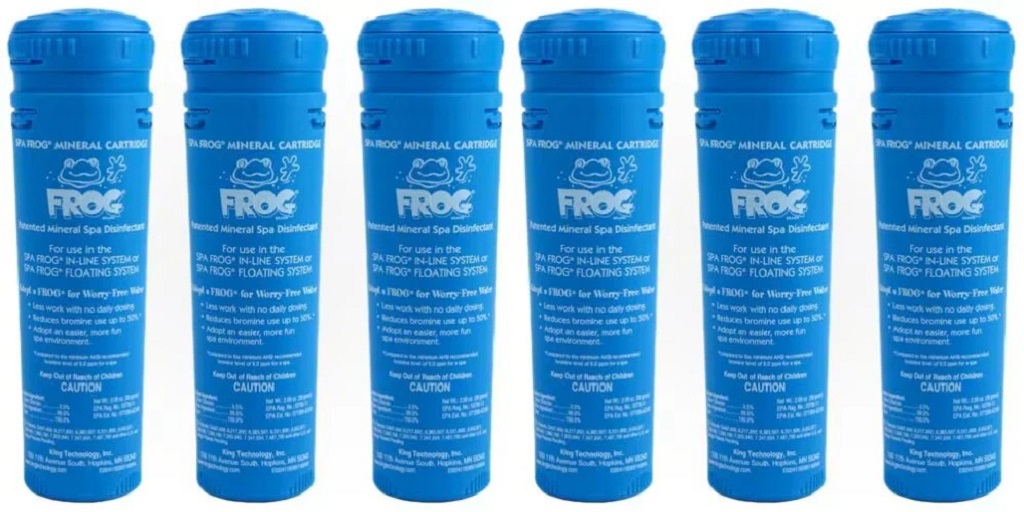Chinese cooking has a rich history, with techniques and equipment refined over centuries to create the delicious and diverse dishes we enjoy today. Whether you’re a novice or an experienced cook, understanding the essentials of Chinese cooking equipment can significantly enhance your culinary skills. Each tool in Chinese cuisine serves a specific purpose and has been perfected to suit various cooking methods. From the versatile wok to the precision of a Chinese rolling pin, each tool has its place in the kitchen, making it indispensable for authentic Chinese cooking. This blog post explores various Chinese-cooking equipment that can transform your cooking experience.
The Wok: A Versatile Kitchen Essential
The wok is arguably the most iconic piece of Chinese cooking equipment, celebrated for its versatility. Different types include carbon steel, cast iron, and non-stick woks, each serving unique functions. Once seasoned, carbon steel works are particularly favored for their quick heating and non-stick qualities. To maintain your wok, it’s essential to season it correctly by heating oil until it smokes, creating a protective layer. Regular cleaning with water and a soft brush, followed by a light oil coating, will keep it in top condition. A well-maintained wok can handle stir-frying, steaming, deep-frying, and even smoking, making it an indispensable tool in the kitchen.
Cleaver: The All-Purpose Knife
The Chinese cleaver is an indispensable kitchen tool known for its versatility. It comes in various forms, including the vegetable cleaver and meat cleaver. With its thin blade, the vegetable cleaver excels at slicing and chopping vegetables, while the meat cleaver, with a thicker blade, is perfect for cutting through bones and tougher meats. Proper technique involves using a rocking motion for chopping, ensuring precise cuts. Maintaining a firm grip on the handle is crucial for safety and efficiency. Regular sharpening is essential to keep the cleaver’s edge sharp and practical, making it a reliable tool for various culinary tasks.
Chinese Rolling Pin: Precision in Pastry Making
The Chinese rolling pin is distinct in its slim, cylindrical design, which offers greater control over dough rolling. This shape is especially beneficial for precision tasks, such as preparing dumplings and other delicate pastries. Unlike Western rolling pins, the Chinese version lacks handles, necessitating a different technique. Cooks use their palms to apply even pressure, allowing for finer control and uniform thickness. Its simplicity and ease of use make it a valuable tool for novices and seasoned cooks. Regular practice with this rolling pin will improve your skill, enabling you to create perfect pastries every time.
Maintenance Tips of Chinese Cooking Equipment
Washing and Drying Utensils
Proper upkeep of Chinese cooking equipment is vital for guaranteeing their durability and functionality. For most utensils, washing them promptly after use with warm water and a gentle soap is best. Avoid submerging wooden and cast iron items, as this can result in warping or rusting. Ensure all items are dried thoroughly to avoid moisture accumulation, mainly on metallic parts prone to oxidation.
Maintaining Woks
For woks, frequently apply oil and heat until smoking can form a protective layer, enhancing flavor over time. This seasoning process is essential for maintaining the wok’s non-stick properties and preventing rust.
Sharpening Knives
Knives, especially cleavers, should be regularly sharpened to retain their cutting effectiveness, thus ensuring smooth chopping. Regularly sharpen your knives using a whetstone or knife sharpener to maintain their edge.
Cleaning Mortars and Pestles
Mortars and pestles, particularly those crafted from absorbent materials like stone, should be cleaned without detergent to maintain quality. Rinse them with warm water and use a brush to remove any residue.
Checking for Wear and Damage
Regularly check your tools for any indications of wear or harm and substitute components as necessary to guarantee safe and effective cooking practices. Inspect handles, blades, and other parts for signs of damage.
Storage Solutions
Consider investing in protective coverings or storage solutions to preserve your equipment, keeping them free from dust and accidental damage when not in use. Store knives in a knife block or magnetic strip and keep woks and other utensils in a dry, ventilated area.
Rice Cooker: Perfect Rice Every Time
A rice cooker is indispensable in Chinese kitchens, guaranteeing effortlessly cooked rice. When selecting a rice cooker, key factors include its capacity, functionality, and versatility in cooking different rice varieties. Some models come with advanced features such as programmable settings, timers, and keep-warm functions, which add convenience and flexibility to meal preparation. A rice cooker streamlines the process, allowing you to focus on other culinary tasks while ensuring consistent results. Additionally, many rice cookers can prepare other grains and dishes, making them a multifunctional appliance. Opt for a non-stick inner pot model for easy cleaning and longevity.
Mortar and Pestle: Traditional Grinding Tool
The mortar and pestle, integral to Chinese culinary practices, are ideal for grinding spices and herbs and creating pastes. Utilized extensively in traditional recipes, they help achieve the delicate textures and rich aromas essential for authentic dishes. The weight and material of the mortar and pestle are crucial for effective grinding; stone and granite are popular choices for their durability and grinding efficiency. When using this tool, start by placing the ingredients in the mortar and applying a circular, pressing motion with the pestle to break them down. Avoid using soap on porous materials to preserve their natural properties. Instead, rinse with warm water and thoroughly dry to prevent moisture retention. Regularly inspecting the tool for cracks or signs of wear ensures its longevity and performance.
Soup Pot: For Hearty Soups and Broths
A soup pot is crucial for making a variety of Chinese soups and broths. When selecting a soup pot, opt for one with a thick base, as this ensures even heat distribution and prevents the contents from burning. A tight-fitting lid is also essential for retaining moisture and concentrating flavors. Typical materials for soup pots include stainless steel, cast iron, and ceramic, each offering different benefits such as durability, heat retention, and aesthetic appeal.
Chinese soups often require extended simmering times to extract maximum flavor from ingredients like bones, meats, and herbs. A well-made soup pot can handle prolonged cooking without warping or degrading. Additionally, the pot’s size should be considered, as larger pots are better for preparing big batches of soup and are ideal for family meals or meal prep. Some soup pots have features such as built-in strainers or pour spouts, which can add convenience. Regular cleaning and proper care, including avoiding metal utensils that can scratch the surface, will ensure your soup pot remains in excellent condition for years.
Bamboo Steamer: For Perfectly Steamed Dishes
Bamboo steamers are quintessential for preparing steamed dishes, such as dumplings, buns, and vegetables. When selecting a bamboo steamer, it’s essential to consider both the size and quality of the bamboo, as these factors will influence its durability and overall performance. To use a bamboo steamer effectively, place it over a wok or a pot with boiling water, ensuring it fits snugly to prevent steam from escaping.
It’s beneficial to line the steamer with parchment paper, cabbage leaves, or banana leaves to prevent food from sticking and to add extra flavor. After each use, wash the steamer with warm water and a soft brush, and ensure it is thoroughly dried to avoid mould and prolong its life. Proper care will keep your bamboo steamer in excellent condition, allowing you to enjoy perfectly steamed dishes every time.
Conclusion
Chinese cooking equipment plays a pivotal role in achieving the authentic flavors and textures that define the cuisine. Tools like the wok, cleaver, and bamboo steamer are designed to perform specific tasks with precision and efficiency, contributing to the overall quality of the dishes. By understanding the unique functions of each piece of equipment, cooks can utilize them to their full potential, enhancing their culinary skills. Proper care and maintenance of these tools are essential to ensure their longevity and effectiveness. With the right equipment and techniques, preparing traditional Chinese dishes can be both enjoyable and rewarding, allowing for a deeper appreciation of this rich culinary tradition.
FAQs
How do I choose the right type of work for my cooking needs?
Choosing the proper work depends on several factors, including your cooking style and the materials. Carbon steel works are highly versatile and excellent for high-heat cooking methods like stir-frying. They require proper seasoning but offer superior heat distribution. Cast iron works are heavier and maintain heat well, making them suitable for slow cooking and braising. Non-stick woks are easier to clean and maintain and ideal for those new to cooking or who prefer less oil. Consider the size, ensuring it fits your stove and the quantity of food you typically prepare.
Can a Chinese rolling pin be used for other types of baking?
A Chinese rolling pin’s slim, cylindrical design offers greater control over dough, making it suitable for various baking tasks beyond Chinese pastries. Its design allows for even pressure distribution, which benefits tasks like rolling out pie crusts, pizza dough, and other pastries. Its lack of handles may initially feel different to those accustomed to Western rolling pins, but with practice, it can become a versatile tool in your baking arsenal. The even pressure helps achieve uniform thickness, which is crucial for consistent baking results.
Is a rice cooker worth the investment?
A rice cooker is valuable to any kitchen, especially if you frequently prepare rice or other grains. It simplifies the cooking process, ensuring perfect consistency with minimal effort. Modern rice cookers have various features, such as programmable settings, timers, and keep-warm functions, adding convenience and flexibility. Beyond rice, many models can cook other grains, such as porridge and steamed vegetables, making them a multifunctional appliance. Opting for a rice cooker with a non-stick inner pot can ease cleaning and prolong the device’s lifespan. A rice cooker is undoubtedly a worthwhile investment for households that value efficiency and ease in meal preparation.
| Related Business Listings |
| Contact Directory |
| Local Business Profiles |




